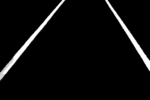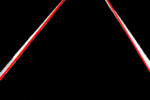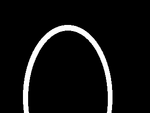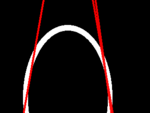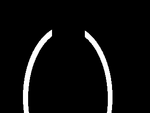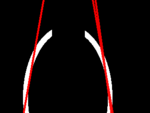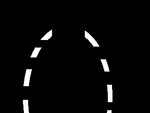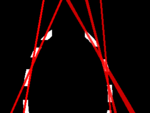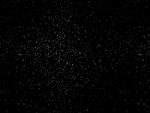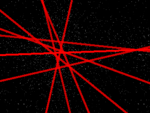Difference between revisions of "Hough Transform"
Jump to navigation
Jump to search
m (→Cons: toned down the language relating to the filter's ability to detect curved lines) |
(added section detailing issues with the current implementation) |
||
| Line 16: | Line 16: | ||
== Output == | == Output == | ||
* A list of the positions/orientations of the lines detected in the input image | * A list of the positions/orientations of the lines detected in the input image | ||
| + | |||
| + | == Issues with the Current Implementation == | ||
| + | * The current implementation does not work well with input images containing no lines. This, however, is due to the way that Hough output is thresholded - the Hough algorithm itself still works well. | ||
== Pictures == | == Pictures == | ||
Revision as of 21:31, 21 November 2005
A good description is on this page.
Wikipedia also has its own Hough Transform article.
Pros
- Able to detect dashed lines
Cons
- Designed for detecting straight lines, making it tricky to use for curved lines - which will probably be common
- Designed to detect lines as opposed to detecting line segments
- Computationally expensive (when compared to simple filters)
Input
- A binary/grayscale image hilighting the line-pixels in the input image
Output
- A list of the positions/orientations of the lines detected in the input image
Issues with the Current Implementation
- The current implementation does not work well with input images containing no lines. This, however, is due to the way that Hough output is thresholded - the Hough algorithm itself still works well.
Pictures
